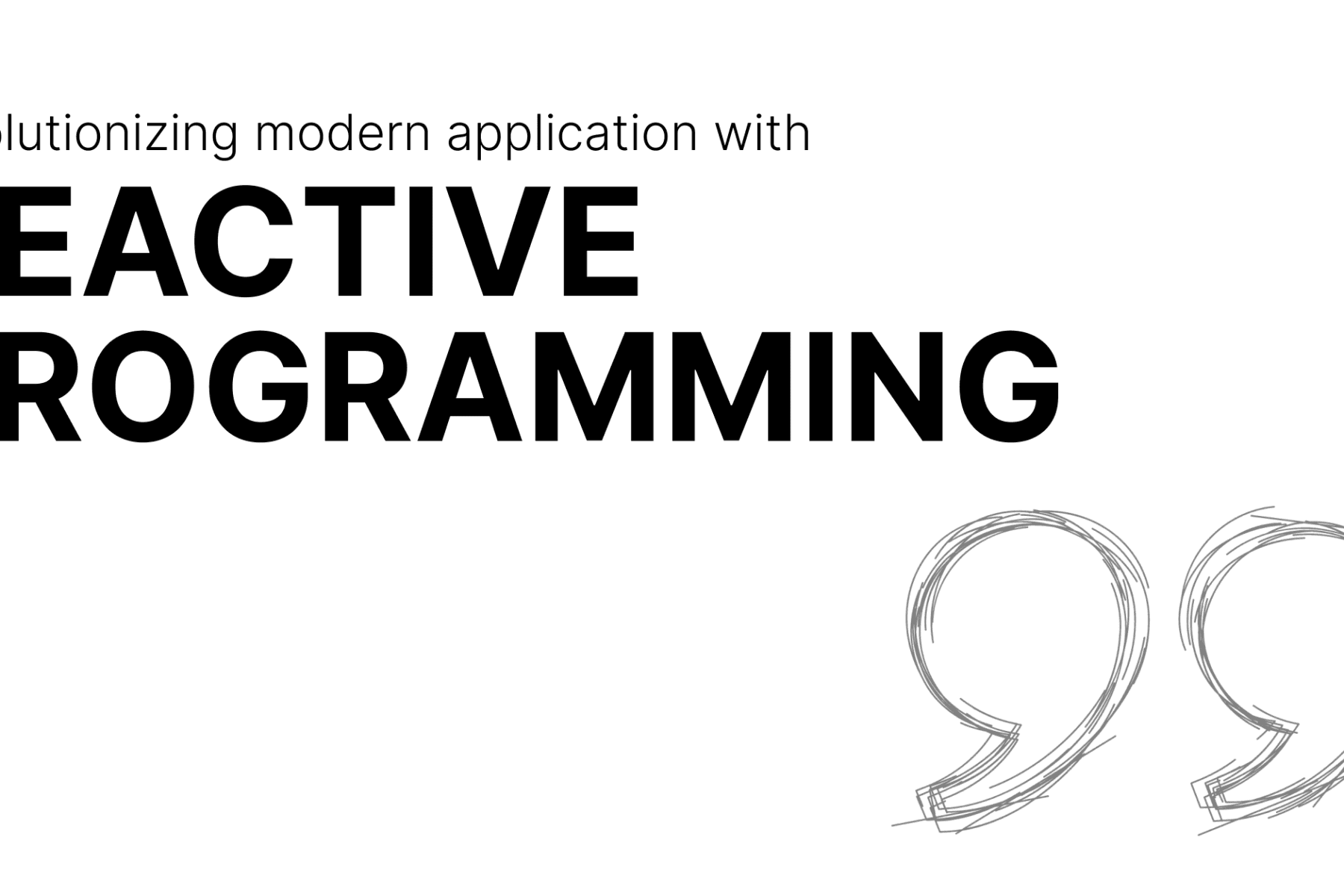Revolutionizing Modern Applications
Reactive programming is a paradigm that is revolutionizing the way we develop and interact with modern applications. Based on the idea of managing data streams and propagating changes asynchronously, this methodology offers significant advantages in terms of responsiveness, scalability, and maintainability. In this article, we’ll explore in detail what reactive programming is, its benefits, the technologies involved, and provide practical examples of its application in the real world.

What is Reactive Programming?
Reactive programming is an event-driven software development paradigm in which system components react to changes in data in real-time. This approach is particularly useful for applications that require high interactivity and responsiveness, such as dynamic user interfaces, real-time monitoring systems, and Internet of Things (IoT) applications.
Fundamental Principles
- Asynchrony: Reactive programming leverages asynchronous operations to manage data streams, preventing resource blocking.
- Backpressure: Intelligent data flow management to prevent system overloads.
- Event-driven: Actions are triggered by events, allowing for immediate responses to changes.
- Compositionality: Data streams can be combined and transformed, making it easier to build complex applications.
Benefits of Reactive Programming
- High Responsiveness: Reactive applications respond quickly to user inputs and data updates, enhancing the user experience.
- Scalability: Thanks to efficient event and resource management, reactive applications can scale better than traditional models, making them ideal for cloud environments and microservices.
- Maintainability: The clear separation between data flow and application logic facilitates software maintenance and evolution.

Technologies and Tools
There are several technologies and tools that support reactive programming. Some of the most popular include:
- ReactiveX: A library that enables reactive programming across various languages, such as Java, Python, and JavaScript. It provides tools for manipulating and transforming data streams.
- Example: RxJS, a library for reactive programming in JavaScript.
- Akka: A toolkit for building concurrent and distributed applications in Scala and Java. It uses the actor model to manage concurrency in a reactive manner.
- Example: Akka Streams, a powerful API for processing data streams reactively.
- Spring WebFlux: Part of the Spring framework, it enables the construction of reactive web applications in Java using the Reactor stack.
- Example: Spring WebFlux, a library for developing non-blocking reactive applications.
Real-World Applications
Reactive programming is applied in various sectors. Here are some concrete examples:
- Dynamic User Interfaces: Applications such as analytics dashboards, trading platforms, and social networks use reactive programming to update data in real-time and enhance interactivity.
- Example: Netflix uses reactive programming to handle millions of simultaneous requests and deliver a smooth user experience.
- Monitoring Systems: Network and system monitoring solutions use real-time data streams to quickly identify and respond to problems and anomalies.
- Example: Lightbend Telemetry, a platform that uses reactive programming to monitor and optimize application performance.
- IoT: IoT devices generate continuous data streams that can be efficiently managed using reactive programming.
- Example: Amazon Web Services (AWS) IoT, which offers tools for reactive management of large-scale IoT data.

Challenges of Reactive Programming
Despite its many benefits, reactive programming also presents some challenges:
- Complexity: Managing asynchronous data streams can be complex and requires a solid understanding of reactive concepts.
- Debugging: Debugging reactive applications can be difficult due to the asynchronous nature of data streams.
- Tooling and Support: Not all frameworks and libraries offer full support for reactive programming, which can limit technological choices.
The Future of Reactive Programming
Reactive programming is poised to grow in importance in the coming years as applications become increasingly complex and interactive. With the rise of IoT, mobile applications, and distributed systems, the need for reactive solutions will continue to increase.
Companies that adopt this paradigm can expect significant improvements in terms of performance and scalability, making their applications more robust and responsive.

Conclusion
Reactive programming represents a modern approach to building highly interactive and scalable applications. By adopting this paradigm, companies can enhance the responsiveness of their applications and prepare for the future challenges of the software world. With the increasing use of reactive libraries and frameworks such as ReactiveX, Akka, and Spring WebFlux, reactive programming is becoming a fundamental component of modern software development.


